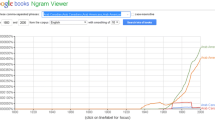Abstract
University crush pages are a type of informal user-ended media in which a subjective turn overflows these communication channels, where facts and data seem of less importance than feelings, introspection, and action. This study aims to understand how participation in these pages actually “crushes” institutional and hegemonic power. It questions how anonymity in student-run social media develops, claiming the impossibility of “networked anonymity”. Using a qualitative content analysis, this paper studies the Facebook crush pages of four universities in Ecuador, during two months of quarantine in 2020. Through a thematic analysis, posts were categorized into two non-mutually exclusive topics: subjectivity and participatory communication, and into two cross-cutting categories: anonymity and COVID-19. The outcomes suggest that crush pages do not demand legitimacy at an institutional level; however, they become universities’ notice boards, promoting a new trend of power in participatory communication. Subjectivities are found in the interplay of crush pages. The data show that there is no full anonymity in these networked sites. Reconsidering the meaning of “crush” leads us to consider how the temporality of love is lived. There are further unanswered questions that merit analysis of the anonymity and traceability of relationships on the virtuality.
Access this chapter
Tax calculation will be finalised at checkout
Purchases are for personal use only
Similar content being viewed by others
Notes
- 1.
We opted for a stratified random sampling, suggested for social media studies [4]. To do so, we applied the simple random sampling (SRS) formula, with 5% margin error:
$$n=\frac{{Z}^{2}{pq}}{{e}^{2}}$$Then, we adjusted the formula to the size of the universe:
$${n}^{0}=\frac{n}{1+\frac{n-1}{N}}$$Where:
Data
Conversion
Z
95%
1,96
N
2 196
universe
p, q
50%
0,5
e
5%
0,05
n°
328
sample
To determine the stratification of posts that we analyzed from each page, we used the constant k = 0,149.
References
Boyd, D.: It’s Complicated: The Social Lives of Networked Teens. Yale University Press, Yale (2014)
Sharon, T., John, N.A.: Unpacking (the) secret: anonymous social media and the impossibility of networked anonymity. New Media Soc. 20(11), 4177–4194 (2018). https://doi.org/10.1177/1461444818768547
Deleuze, G., Guattari, F.: A Thousand Plateaus. University of Minnesota Press, Minneapolis (1987)
Fricker, R.: Sampling methods for web and E-mail Surveys. In: Fielding, N., Lee, R.M., Blank, G. (eds.). The SAGE Handbook of Online Research Methods. SAGE Publications, Ltd., Thousand Oaks (2008). https://doi.org/10.4135/9780857020055. https://methods.sagepub.com/book/the-sage-handbook-of-online-research-methods.
Miller, P.: How intranets and related technologies are redefining internal communications. In: Wright, M. (ed.) Gower Handbook of Internal Communication, pp. 189–198. CRC Press, New York (2016)
Treem, J.W., Leonardi, P.M.: Social media use in organizations: exploring the affordances of visibility, editability, persistence, and association. Ann. Int. Commun. Assoc. 36(1), 143–189 (2013). https://doi.org/10.1080/23808985.2013.11679130
Yepez-Reyes, V., Dohn, N.B.: Affordances for læring i web 2.0: En rodvækstanalyse af kommunikation i organiserede sociale bevægelse. In: Dohn, N.B., Hansen. J.J. (eds.) Didaktik, design og digitalisering. vol Medier, Kommunikation, Journalistik: Samfundslitteratur, pp. 175–196 (2016)
La, S.P.: Intimidad como espectáculo. Fondo de Cultura Económica, Buenos Aires (2008)
El, B.Z.: Amor Líquido. Fondo de Cultura Económica, Buenos Aires (2009)
La, F.M.: Hermenéutica del sujeto; Cursos Del College De France, 1981–1982. Ediciones Akal, Madrid (2005)
Foucault, M.: Microfisica del poder. Las Ediciones de La Piqueta, Madrid (1979)
Madsen, V.T.: Participatory communication on internal social media – a dream or reality? Findings from two exploratory studies of coworkers as communicators. Corp. Commun.: Int. J. 23(4), 614–628 (2018). https://doi.org/10.1108/CCIJ-04-2018-0039
Parker, M.A., Bozeman, B.: Social media as a public values sphere. Pub. Integr. 20(4), 386–400 (2018). https://doi.org/10.1080/10999922.2017.1420351
Kruse, L.M., Norris, D.R., Flinchum, J.R.: Social media as a public sphere? Politics on social media. Sociol. Q. 59(1), 62–84 (2018). https://doi.org/10.1080/00380253.2017.1383143
Scott, C.R.: To reveal or not to reveal: a theoretical model of anonymous communication. Commun. Theory 8(4), 381–407 (1998). https://doi.org/10.1111/j.1468-2885.1998.tb00226.x
Cho, D., Kwon, K.H.: The impacts of identity verification and disclosure of social cues on flaming in online user comments. Comput. Hum. Behav. 51, 363–372 (2015). https://doi.org/10.1016/j.chb.2015.04.046
Hutchens, M.J., Cicchirillo, V.J., Hmielowski, J.D.: How could you think that?!?!: understanding intentions to engage in political flaming. New Media Soc. 17(8), 1201–1219 (2015). https://doi.org/10.1177/1461444814522947
Correa, D., Silva, L.A., Mondal, M., Benevenuto, F., Gummadi, K.P.: The many shades of anonymity: characterizing anonymous social media content. In: Cha, M., Mascolo, C., Sandvig, C. (eds.) ICWSM, pp. 71–80. AAAI Press (2015)
Portillo Fernández, J.: Planos de realidad, identidad virtual y discurso en las redes sociales. Logos 26, 51–63 (2016). https://doi.org/10.15443/RL2604
Author information
Authors and Affiliations
Corresponding author
Editor information
Editors and Affiliations
Rights and permissions
Copyright information
© 2021 The Author(s), under exclusive license to Springer Nature Switzerland AG
About this paper
Cite this paper
Yepez-Reyes, V., González, A., Carrillo-Andrade, A. (2021). Crushing Power! How Participation in University Crush Pages Challenges Anonymity and Hegemonic Power. In: Rocha, Á., Ferrás, C., López-López, P.C., Guarda, T. (eds) Information Technology and Systems. ICITS 2021. Advances in Intelligent Systems and Computing, vol 1331. Springer, Cham. https://doi.org/10.1007/978-3-030-68418-1_23
Download citation
DOI: https://doi.org/10.1007/978-3-030-68418-1_23
Published:
Publisher Name: Springer, Cham
Print ISBN: 978-3-030-68417-4
Online ISBN: 978-3-030-68418-1
eBook Packages: Intelligent Technologies and RoboticsIntelligent Technologies and Robotics (R0)




